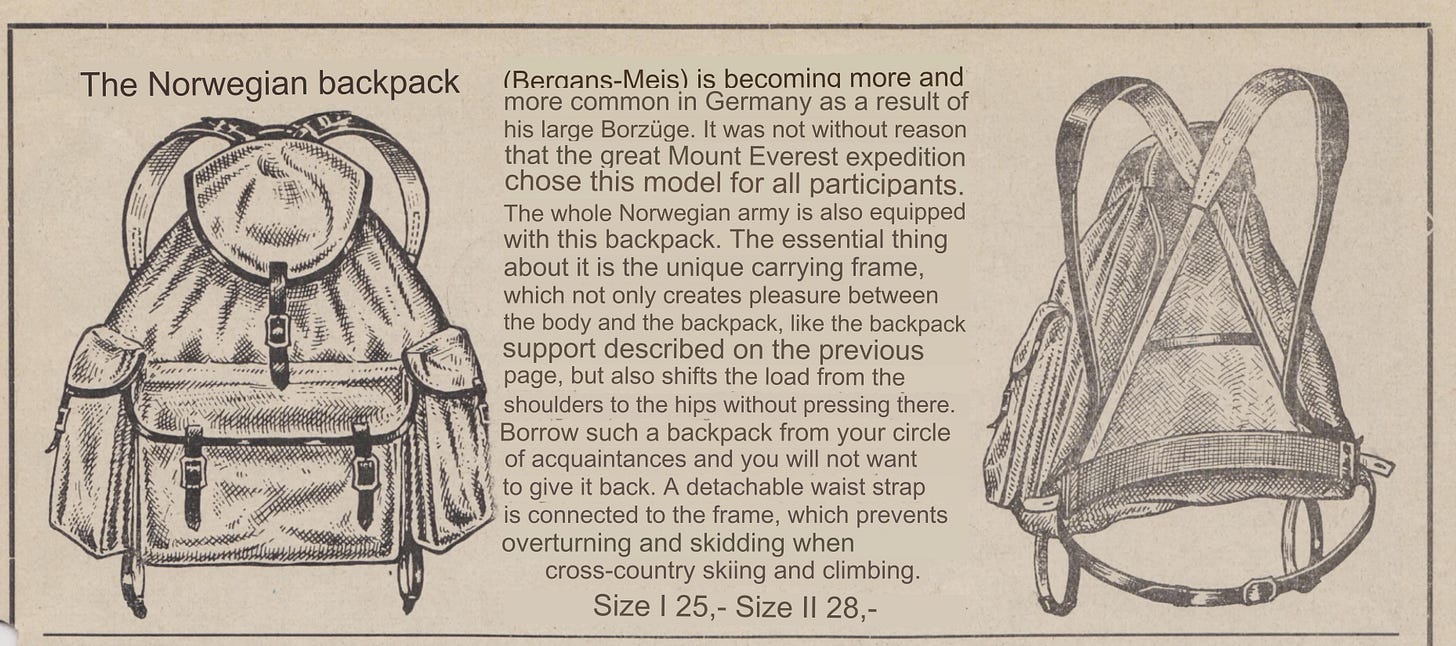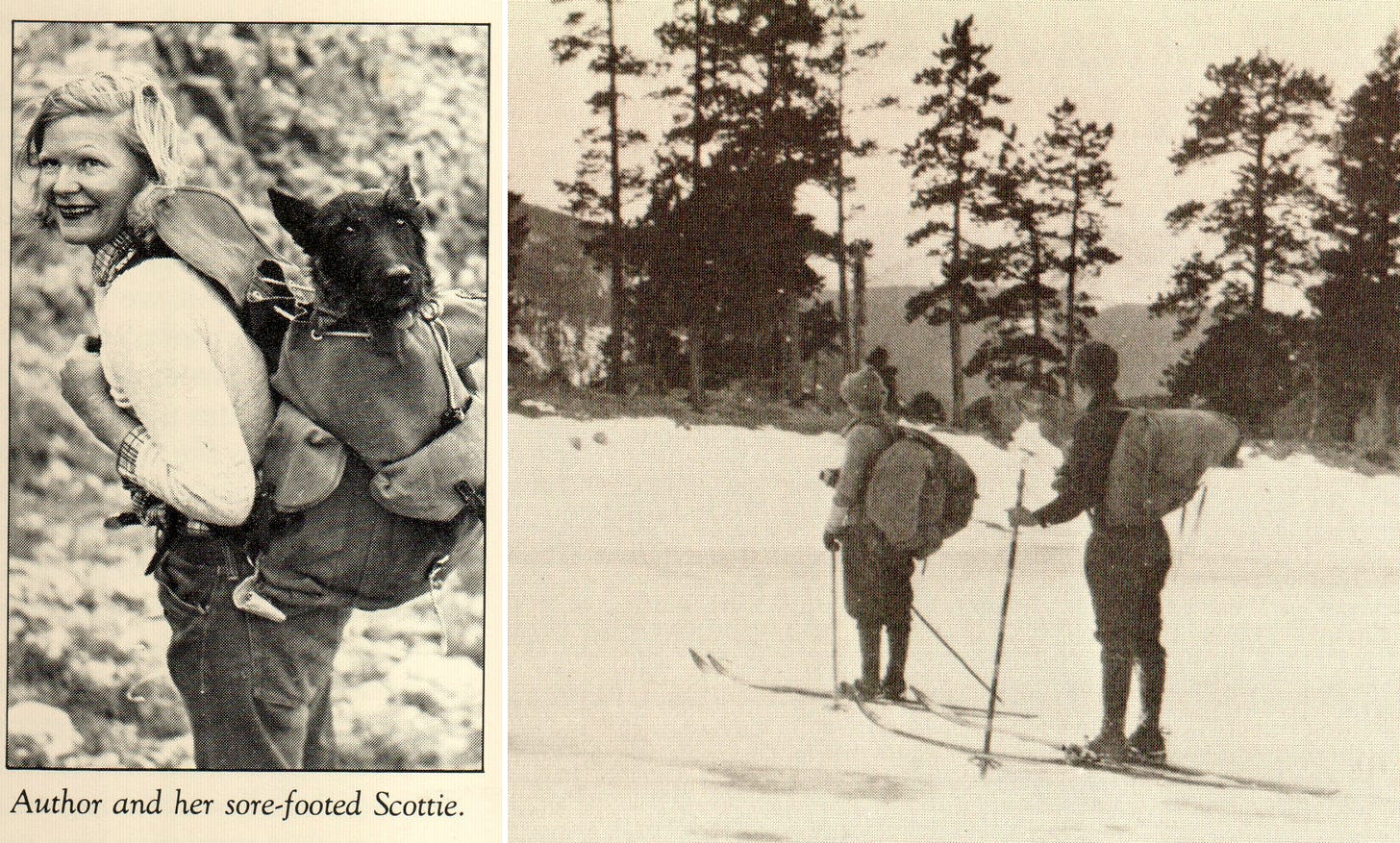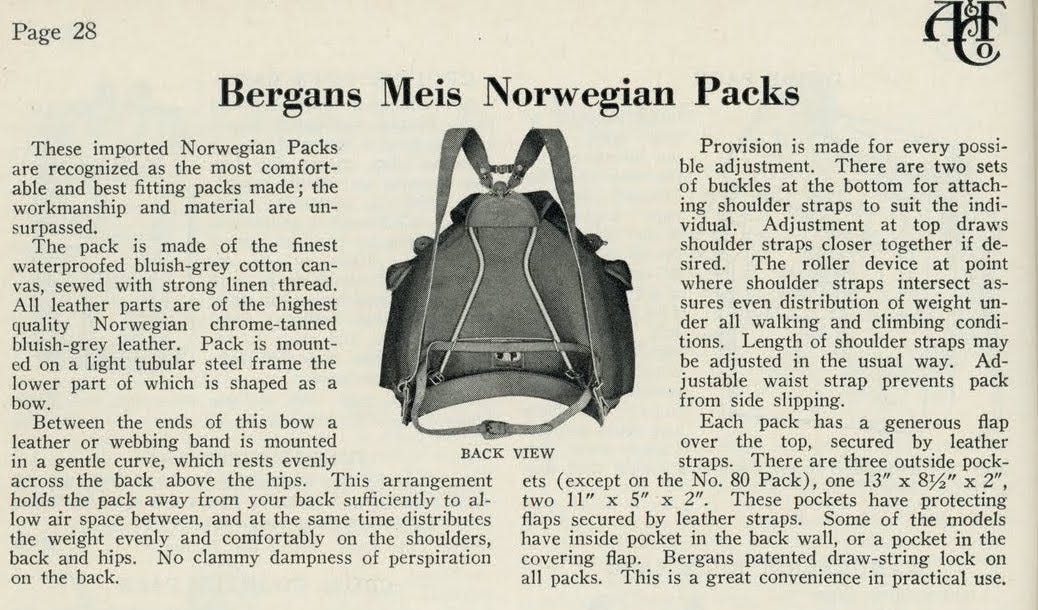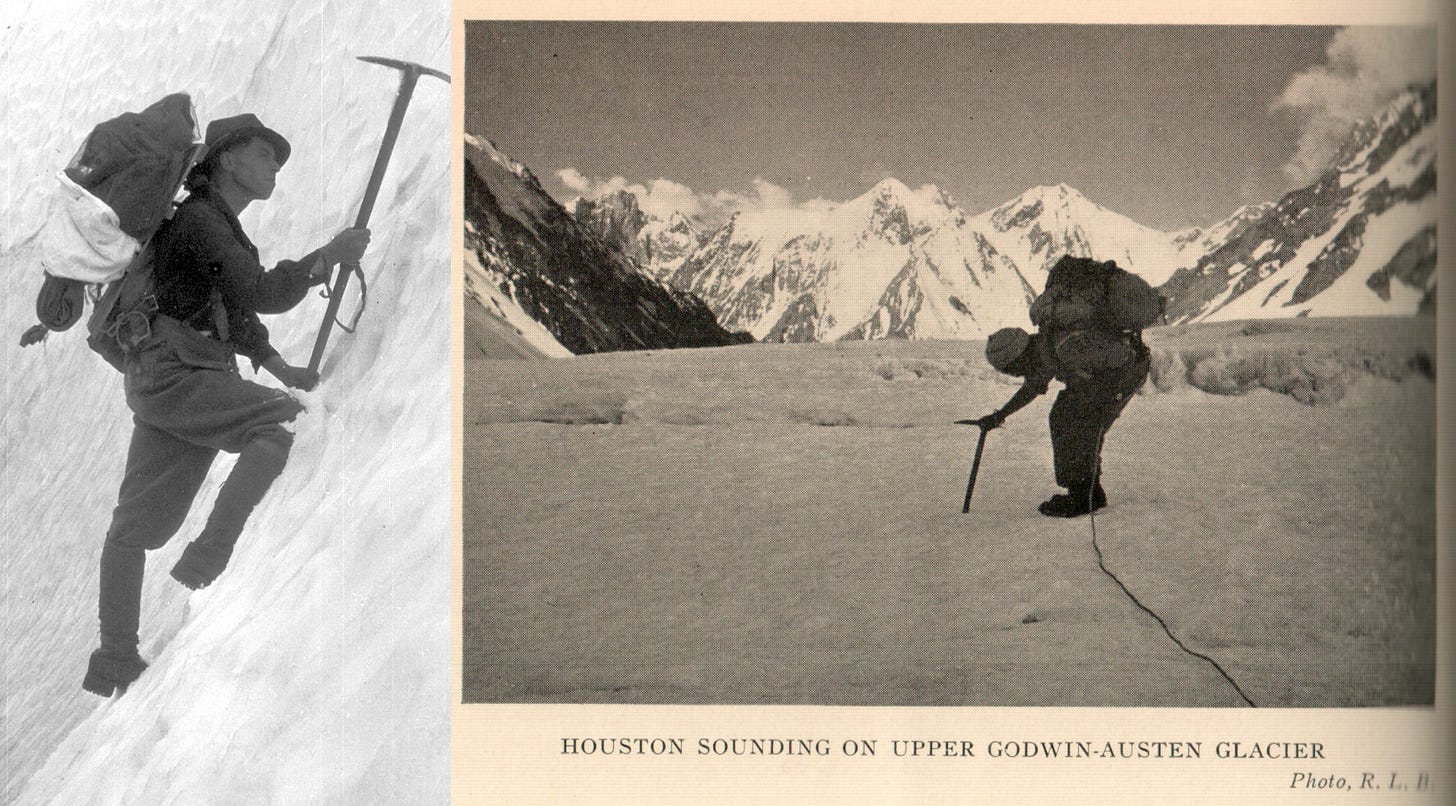Climbing Packs, 1930s (part of Bigwall Bivouacs Chapter)
draft Tools for the Wild Vertical (end of Volume 2)
Buy the books here:
Volume 1: (mostly) European Tools and Techniques to the 1930s
Volume 2: (mostly) North American Climbing Tools and Techniques to the 1950s
Climbing Packs (brief pictorial overview) 1920s-1950s
For climbing, a simple rucksack without outside pockets were preferred. These were generally a simple tapered sack, with a single top-point attachment for a shoulder harness.

Semi-frame
For semi-frame packs in the 1920s, the state-of-the-art pack design was the Norwegian Bergans-Meis design, sold globally (imported into the USA by Abercrombie and Fitch). These were suitable for loads up to about 20kg.

Heavier loads
Bigwalls need a lot of gear brought to base camp, so for heavier loads, separate frames or harness systems were lashed to duffels and other carrying sacks. Lavender and Griffith record a harness system used in Colorado and on Denali by Parker and Browne. For the heaviest loads, framed backboards fit the bill. On the first American expedition to K2, the team had light aluminum pack-frames, to which all sorts of equipment was lashed for the porters in 23kg. loads—duffel bags, wood boxes (10” x 12” x 20”), sacks of food, etc. The aluminum frames used in 1938 were made by Camp and Sports, ‘Everest Model,” and only weighed 680g. (1.5lbs.).



Jump to the 1960s
Integrated framed packs were becoming popular in the 1950s, but even in the 1960s pack innovators like Gerry Cunningham still offered frames and sacks separately, as lashing one’s own sack onto a frame was a basic skill and still favored by many for versatility.


COOKING AND LIGHTING
to be continued—see the completed Volume 3 coming soon!



